|
#2
24th November 2015, 04:01 PM
| |||
| |||
| Re: IIT Jam Chemistry PDF
As you want to get the syllabus and previous year question papers of Chemistry of IIT Joint Admission Test so here is the information of the same for you: PHYSICAL CHEMISTRY Basic Mathematical Concepts: Functions, maxima and minima, integrals, ordinary differential equations, vectors and matrices, determinants, elementary statistics and probability theory. Atomic and Molecular Structure: Fundamental particles, Bohr’s theory of hydrogen-like atom; wave-particle duality; Uncertainty principle; Schrödinger’s wave equation; Quantum numbers, shapes of orbitals; Hund’s rule and Pauli’s exclusion principle, electronic configuration of simple homonuclear diatomic molecules. Theory of Gases: Equation of state of ideal and non-ideal (van der Waals) gases, Kinetic theory of gases. Maxwell-Boltzmann distribution law; equipartition of energy. Solid state: Crystals, crystal systems, X-rays, NaCl and KCl structures, close packing, atomic and ionic radii, radius ratio rules, lattice energy, Born-Haber cycle, isomorphism, heat capacity of solids. Chemical Thermodynamics: Reversible and irreversible processes; First law and its application to ideal and non-ideal gases; Thermochemistry; Second law; Entropy and free energy, Criteria for spontaneity. Chemical and Phase Equilibria: Law of mass action; Kp, Kc, Kx and Kn; Effect of temperature on K; Ionic equilibria in solutions; pH and buffer solutions; Hydrolysis; Solubility product; Phase equilibria–Phase rule and its application to one-component and two-component systems; Colligative properties. Electrochemistry: Conductance and its applications; Transport number; Galvanic cells; EMF and Free energy; Concentration cells with and without transport; Polarography; Concentration cells with and without transport; Debey-Huckel-Onsagar theory of strong electrolytes. Chemical Kinetics: Reactions of various order, Arrhenius equation, Collision theory; Theory of absolute reaction rate; Chain reactions – Normal and branched chain reactions; Enzyme kinetics; photochemical processes; Catalysis. Adsorption: Gibbs adsorption equation, adsorption isotherm, types of adsorption, surface area of adsorbents, surface films on liquids. ORGANIC CHEMISTRY Basic Concepts in Organic Chemistry and Stereochemistry: Electronic effect (resonance, inductive, hyperconjugation) and steric effects and its applications (acid/base property). Optical isomerism in compounds without any stereocenters (allenes, biphenyls), conformation of acyclic systems (substituted ethane/n-propane/n-butane) and cyclic systems (mono and di substituted cyclohexanes). Organic Reaction Mechanism and Synthetic Applications: Chemistry reactive intermediates, carbine, nitrene, benzyne, Hofmann-Curtius-Lossen rearrangement, Wolf rearrangement, Simmons-Smith reaction, Reimer-Tiemann reaction, Michael reaction, Darzens reaction, Witting reaction, McMurry reaction. Pinacol-pinacolone, Favorskii, benzilic acid rearrangement, dienonc-phenol rearrangement, Bayer-Villeger reaction. Oxidation and reduction reactions in organic chemistry. Organometallic reagents in organic synthesis (Grignard and organocopper). Diels-Alder reaction, Sigmatropic reactions. Qualitative Organic Analysis: Functional group interconversions, structural problems using chemical reactions, identification of functional groups by chemical tests, elementary 1H NMR and IR spectroscopy as a tool for structural elucidation. Natural Products Chemistry: Introductory chemistry of alkaloids, terpenes, carbohydrates, amino acids, peptides and nucleic acids. Heterocyclic Chemistry: Monocyclic compounds with one hetero atom. INORGANIC CHEMISTRY Periodic Table: Periodic classification of elements and periodicity in properties; general methods of isolation and purification of elements. Chemical Bonding and Shapes of Compounds: Types of bonding; VSEPR theory and shapes of molecules; hybridization; dipole moment; ionic solids; structure of NaCl, CsCl, diamond and graphite; lattice energy. Main Group Elements (s and p blocks): Chemistry with emphasis on group relationship and gradation in properties; structure of electron deficient compounds of main group elements and application of main group elements. Transition Metals (d block): Characteristics of 3d elements; oxide, hydroxide and salts of first row metals; coordination complexes; VB and Crystal Field theoretical approaches for structure, color and magnetic properties of metal complexes. Organometallic compounds, metal carnonyls, nitrosyls and metallocenes, ligands with back bonding capabilities; MO theory approaches to explain bonding in metal-carbonyl, metal-nitrosyl and metal-phosphine complexes. Bioinorganic Chemistry: Essentials and trace elements of life, basic reactions in the biological systems and the role of metal ions especially Fe2+, Fe3+, Cu2+ and Zn2+, function of hemoglobin and myoglobin. Instrumental Methods of Analysis: Basic principles, instrumentations and simple applications of conductometry, potentiometry, UV-vis spectro-photometry, analysis of water, air and soil samples. Analytical Chemistry: Principles of qualitative and quantitative analysis; acid-base, oxidation-reduction and EDTA and precipitation reactions; use of indicators; use of organic reagents in inorganic analysis; radioactivity; nuclear reactions; applications of isotopes. IIT JAM Chemistry Papers: Some content of the file has been given here: 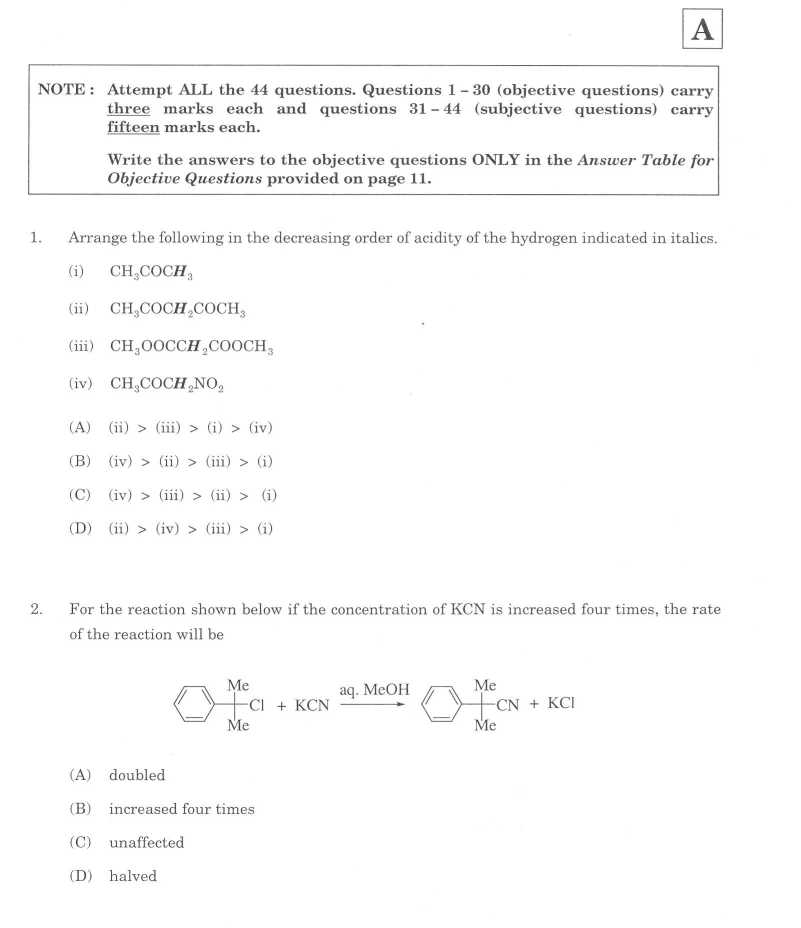 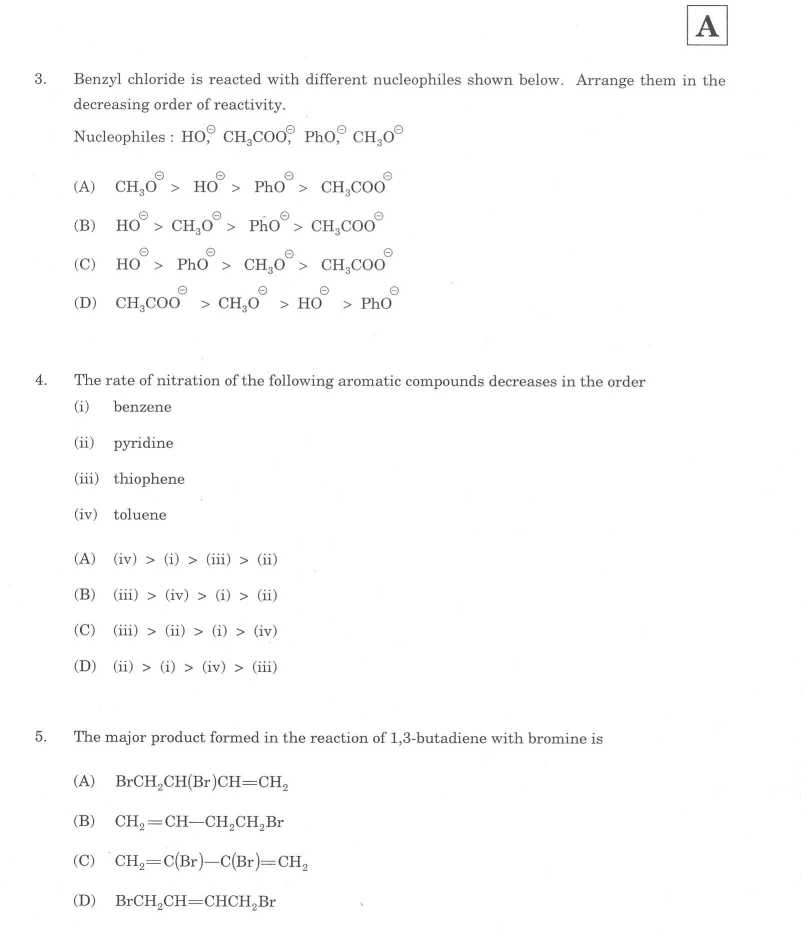 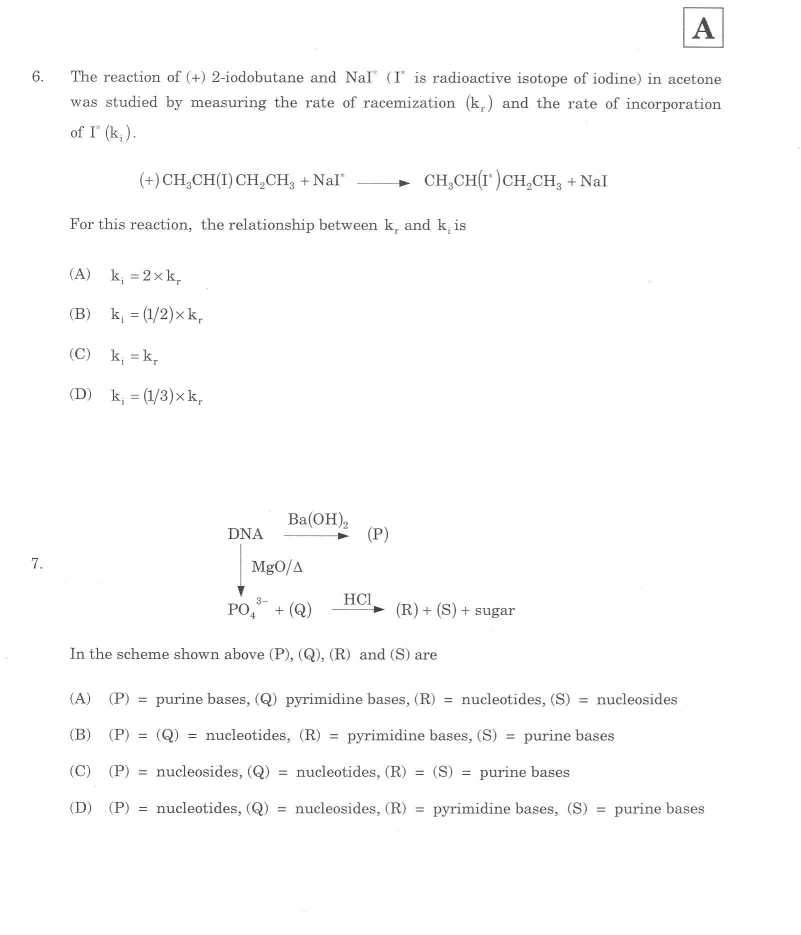 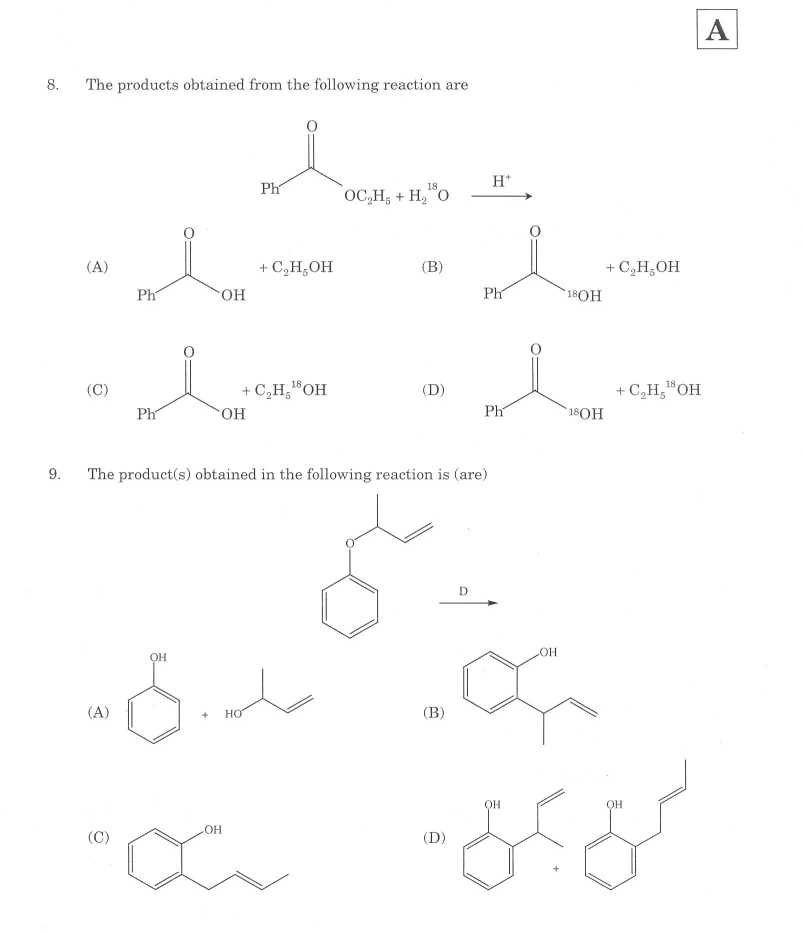 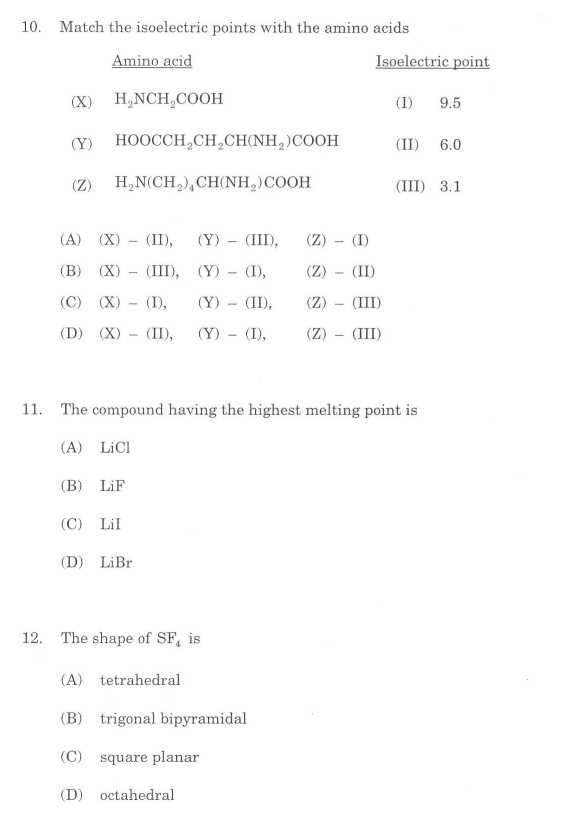 For more detailed info9rmation I am uploading 2 PDF files which are free to download: |